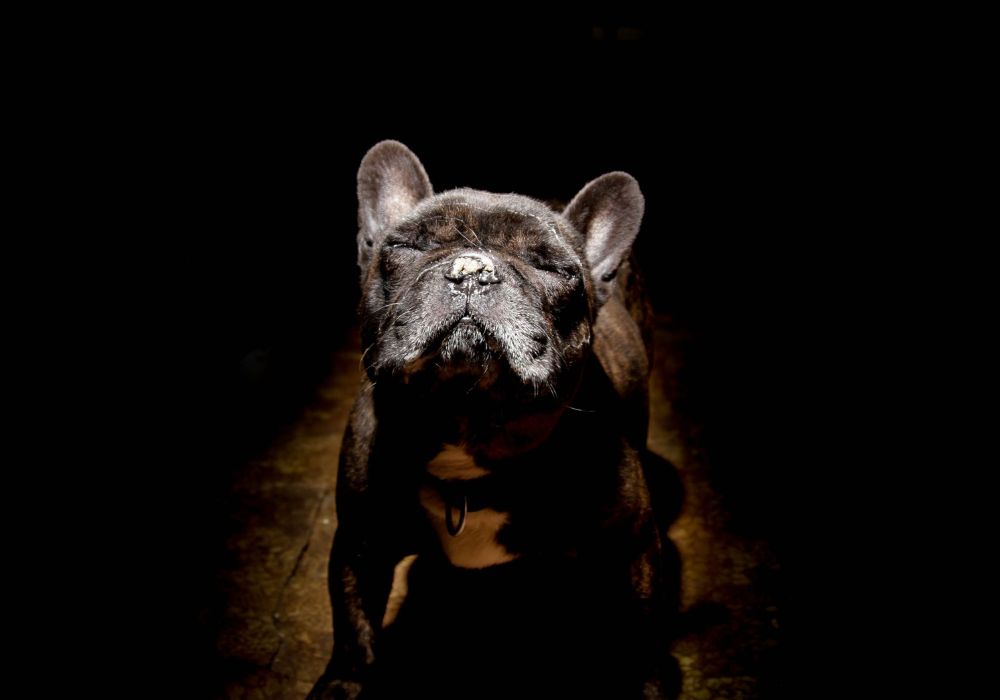Meet the Beagle: Traits, Care, Training & Bark Control

Beagles are a popular dog breed known for their friendly personalities and distinctive appearance. In fact, the American Kennel Club (AKC) consistently ranks them among the top 10 most popular breeds in the United States.
With their expressive eyes, long ears, and compact bodies, Beagles are a recognizable and cherished breed. These dogs are affectionate, lively, and excellent companions, making them a favorite among pet owners.
Key Traits of a Beagle

AKC classifies Beagles under the hound group. Beagles are known for their keen sense of smell and tracking abilities. Their bodies are muscular and sturdy, and they have a smooth, dense coat.
- Height: An average adult Beagle stands between 13 to 15 inches.
- Weight: A fully-grown Beagle ideally weighs between 20 to 30 pounds.
- Lifespan: The life expectancy of a Beagle is 10 to 15 years.
- Appearance: Beagles have a distinct appearance with large, expressive eyes, long, droopy ears, and a slightly curved tail. Their coat is short and dense, often tri-colored or bi-colored with variations of black, white, and brown.
- Temperament: Beagles are known for their friendly and gentle nature. They are curious, intelligent, and great with children, making them excellent family pets.
Where Did the Beagle Originate?

The Beagle's history dates back to ancient Greece, but the modern Beagle was developed in England around the 1830s. Initially bred for hunting hares, these dogs are skilled trackers with an extraordinary sense of smell. Their name is thought to derive from the French word "bégueule," meaning "open throat," referring to their baying voice.
Beagles became popular hunting companions due to their stamina, determination, and keen tracking abilities. They were brought to America in the late 19th century, where they continued to be prized for their hunting skills and companionship.
Physical Traits of a Beagle

Beagles have several distinguishing physical traits that set them apart from other breeds.
- Ears: Beagles have long, floppy ears that are set low on their heads and are soft to the touch.
- Mouth: Beagles have a straight, square-cut jaw and a slightly pronounced stop between the muzzle and the skull.
- Eyes: The breed's eyes are large, brown or hazel, and convey a gentle, pleading expression.
- Head: Beagles have a broad skull, slightly domed at the occiput, and a straight, square-cut muzzle.
- Nose: Beagles are renowned for their black noses and incredible olfactory senses.
- Coat Length and Color: Beagle coats are short, dense, and weather-resistant. Common coat colors include tricolor (black, white, and brown), red and white, lemon, and various combinations of these colors.
- Tail: Beagles have a medium-length tail that is carried high but never curled over the back. The tail often has a white tip, which makes it easy to see in tall grass.
Training and Exercise Tips for Beagles
Training Your Beagle Pup

Beagles are intelligent and curious dogs, but they can also be quite stubborn. Hence, consistent training and positive reinforcement are key to raising a well-behaved Beagle.
- Start Young: Begin training your Beagle puppy as soon as you bring them home. Early socialization and obedience training are crucial.
- Use Positive Reinforcement: Beagles respond well to positive reinforcement techniques such as treats, praise, and play.
- Socialize: Expose your Beagle to different environments, people, and other animals early on to help them develop into well-adjusted adults.
- Be Patient and Consistent: Beagles can be independent thinkers, so patience and consistency are essential when training. Short, frequent training sessions work best.
- Use the Right Equipment: A sturdy leash and harness are ideal for Beagles, as they can easily get distracted by scents.
Exercise

Beagles are energetic dogs that require regular exercise to stay healthy and happy. However, their keen sense of smell can lead them astray, so it's important to provide safe, controlled exercise.
Exercise Tips for Beagles
- Daily Walks: Beagles need at least an hour of exercise daily. Break this up into two or three walks.
- Playtime: Engage your Beagle in interactive play, such as fetch or tug-of-war.
- Supervised Outdoor Time: If you have a secure yard, allow your Beagle to explore and sniff around, but always supervise to prevent escape.
- Mental Stimulation: Beagles are intelligent and enjoy puzzle toys and scent games to keep their minds sharp.
Things to Remember When Exercising Your Beagle
- Use a Harness: A harness can help prevent injury and provide better control during walks.
- Monitor Weather Conditions: Beagles can overheat quickly, so avoid strenuous activity during extreme heat.
- Stay Safe: Keep your Beagle on a leash or within a secure, fenced area to prevent them from following their nose into danger.
Caring and Management Tips for Beagles
Owning a Beagle, or any other dog, comes with its own set of responsibilities. As a pet owner, you must ensure your Beagle is well-cared for, by providing proper food, shelter, grooming, and healthcare.
Grooming and Fur Brushing
Beagles have short, dense fur that is relatively easy to manage. Regular grooming helps keep their coat healthy and reduces shedding.
- Brushing: Brush your Beagle’s coat once or twice a week using a rubber grooming mitt or a bristle brush. This helps remove loose hair and dirt while promoting healthy skin by distributing natural oils.
- Shedding: Beagles shed year-round but tend to shed more during seasonal changes. During these times, you might need to brush them more frequently to manage the extra hair.
Nail Trim
Regular nail trimming is essential for Beagles. Long nails can cause discomfort and lead to walking difficulties.
- Trimming Frequency: Trim your Beagle’s nails every 3-4 weeks. Start trimming their nails when they are puppies to get them used to the process.
- Tools: Use a dog nail clipper or a grinder. Be cautious not to cut too close to the quick, which can cause pain and bleeding.
Bathing
Beagles are generally clean dogs and do not require frequent baths. However, occasional baths are necessary to keep them fresh and clean.
Bathe your Beagle every 6-8 weeks or when they get particularly dirty. Use a mild, vet-recommended dog shampoo to avoid skin irritation. After bathing, thoroughly dry your Beagle, especially the areas between their toes and under their ears, to prevent fungal infections.
General Health
Eye Care
Beagles are prone to developing tear stains and eye infections, so regular eye care is important.
- Cleaning: Gently wipe around your Beagle’s eyes with a damp cloth to remove any discharge. If you notice redness or excessive tearing, consult your veterinarian.
- Inspection: Regularly check for signs of irritation or infection, such as redness or swelling.
Ear Care
Beagles have long, floppy ears that can trap dirt and moisture, making them prone to ear infections.
- Cleaning: Clean your Beagle’s ears weekly with a damp cloth or a vet-recommended ear cleaner. Be gentle to avoid injuring the ear canal.
- Inspection: Look for signs of infection, such as redness, swelling, or a foul odor. If you notice any of these signs, consult your veterinarian.
Oral Care
Good oral hygiene is crucial for preventing dental diseases in Beagles.
- Brushing: Brush your Beagle’s teeth 2-3 times a week using a toothbrush and toothpaste designed for dogs. Focus on the back molars, where plaque buildup is most common.
- Dental Chews: Provide dental chews or toys to help keep their teeth clean and healthy.
Diet and Nutrition
Proper nutrition is vital for maintaining your Beagle’s health and preventing obesity.
- Feeding Schedule: Feed your Beagle twice a day, following the portion guidelines on the dog food packaging or your vet’s recommendations.
- Ingredients to Avoid: Avoid foods containing harmful ingredients such as ethoxyquin, butylated hydroxyanisole (BHA), and butylated hydroxytoluene (BHT). Steer clear of foods with excessive fillers, wheat, and corn.
- Eating Habits: Beagles are fast eaters, which can lead to digestive problems. Consider using a slow feeder bowl to help them eat at a healthier pace.
Common Health Problems of Beagles
Beagles are generally healthy dogs, but they are prone to certain health issues:
- Ear Infections
- Obesity
- Hip Dysplasia
- Hypothyroidism
- Epilepsy
- Cherry Eye (prolapse of the third eyelid gland)
Is a Beagle the Perfect Match for You?

Beagles make excellent family pets and thrive in various environments. However, Beagles have specific needs and traits that potential owners should consider before bringing one into their home.
Why You Might Consider a Beagle
You might consider getting a Beagle if you want a dog that:
- Loves exercise and play
- Is great with kids
- Has a sociable nature
- Is intelligent and curious
- Is loyal and affectionate
- Is adaptable
Potential Challenges of Owning a Beagle
However, a Beagle may not be the best choice for you if you prefer not to deal with:
- High energy levels
- Stubbornness
- Strong prey drive
- Separation anxiety
- Shedding
- Vocalization
Beagles are known for their distinctive baying and barking. They can be quite vocal, especially when following a scent or seeking attention.
If you're looking for some peace and quiet, check out our top picks for bark control collars ideal for Beagles:
The waterproof Elite Little Dog Spray Bark Collar by PetSafe features a Perfect Bark® sensor that only recognizes your dog's barking. This ensures no accidental stimulation is issued when other sounds or animals are nearby. The ergonomic, QuickFit™ adjustable nylon collar strap with a buckle makes it easy to put on and off and find the perfect fit. Comes with one (1) level of spray correction.
The PetSafe Lite Rechargeable Bark Collar is a mild, static stimulation collar with automatically adjusting correction levels. The correction level increases until your dog stops barking. At this point, the anti-bark collar will immediately return to the lowest levels. This no bark collar is ideal for small, sensitive, and shy dogs.
The PetSafe Vibration bark collar has 10 combinations of vibration correction. Your dog will be distracted from one of two vibration points, interrupting the barking pattern and facilitating behavior change.
The SBC-R is one of three SportDog bark collar models available (see how the SBC-R compares with other models here.) This bark collar for small dogs as small as 8 pounds is also powerful enough to handle bigger breeds. The three programmable corrections give you more control over how you want to train your dog.
E-Collar Technologies is mainly known for its Mini Educator ET-300 remote training collar. Most people don’t realize that they also have one of the best bark collars on the market. The BP-504 is a static stimulation anti-bark collar. It’s recommended for dogs as small as 5 pounds. It has the usual bark detection technology you’ll find in other collars. But what sets it apart is the adjustable bark sensitivity levels. No bark collars typically don’t address howling or whining. But with the bark sensitivity feature from low to high, small dogs with howling or whining issues are also covered.
FAQs About the Beagle
Are Beagles a good family dog?
Yes, Beagles are excellent family dogs due to their friendly and gentle nature. They are great with children and get along well with other pets.
Is a Beagle a smart dog?
Beagles are intelligent and curious dogs, especially known for their remarkable sense of smell. However, their intelligence can sometimes lead to stubbornness.
Are Beagles high maintenance?
Beagles are moderate-maintenance dogs. They require regular exercise, grooming to manage shedding, and consistent training due to their high energy and curiosity.
Are Beagles difficult to train?
Beagles can be challenging to train because of their independent and stubborn nature. Positive reinforcement and patience are key to successful training.
What are the disadvantages of a Beagle?
Some disadvantages of owning a Beagle include their high energy levels, vocal nature, and strong prey drive. They can also be prone to separation anxiety and require consistent training.
Final Words
Beagles are charming, loyal, and fun-loving dogs that can make excellent companions for the right owner. They are best suited for active individuals or families who can provide them with the exercise, training, and social interaction they need. If you are prepared for the challenges and rewards of owning a Beagle, you will find a loyal and affectionate friend in this breed.
You might also enjoy...
-
Posted in
E-Collar Info & Guides, Pet Training, Training Tips







